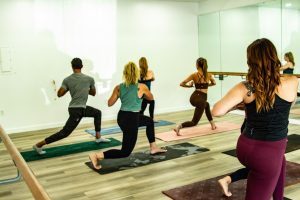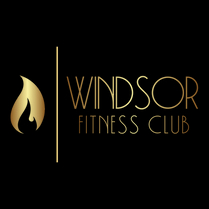 Pilates has gained significant popularity in recent years, and with good reason. This low-impact exercise method offers numerous benefits for individuals of all ages, fitness levels, and medical histories. In this comprehensive guide, we’ll explore the numerous advantages of incorporating Pilates into your workout routine, from increased strength and improved posture to injury prevention and rehabilitation.
Pilates has gained significant popularity in recent years, and with good reason. This low-impact exercise method offers numerous benefits for individuals of all ages, fitness levels, and medical histories. In this comprehensive guide, we’ll explore the numerous advantages of incorporating Pilates into your workout routine, from increased strength and improved posture to injury prevention and rehabilitation.
Pilates: A Whole-Body Fitness Approach
Pilates is a unique method of whole-body exercise that emphasizes core stability, strength, and flexibility. Developed in the early 20th century by Joseph Pilates, this approach combines over 600 exercises and variations to target every muscle group in the body. By focusing on alignment, precise movement patterns, and controlled breathing, Pilates provides a well-rounded, integrative fitness experience that can benefit individuals from all walks of life.
Suitable for All Ages and Abilities
One of the most appealing aspects of Pilates is its accessibility to everyone, regardless of age, gender, fitness level, or medical history. The method’s emphasis on core strength, proper alignment, and mind-body connection makes it an ideal choice for anyone seeking to improve their overall health and well-being.
Adaptable to Individual Needs
With its vast repertoire of exercises and modifications, Pilates can be tailored to meet the specific needs of each practitioner. Whether you’re recovering from an injury, managing chronic pain, or looking to enhance your athletic performance, Pilates offers a customizable approach to help you reach your goals.
Strengthening Your Core with Pilates
At the heart of Pilates lies its focus on core strength. The core muscles, which include the deep muscles of the back, abdomen, and pelvic floor, provide essential support and stability for the entire body. Through targeted exercises and mindful movement, Pilates helps to strengthen these crucial muscles, ensuring a strong foundation for all other physical activities.
Improved Core Function and Stability
A strong core is vital for maintaining proper alignment, balance, and overall body function. By emphasizing the development of the core muscles, Pilates helps to create a stable base from which all other movement originates. This results in improved efficiency, power, and reduced risk of injury during daily activities and athletic pursuits.
Alleviation of Back and Hip Pain
Many people experience chronic back and hip pain due to muscle imbalances and poor posture. Pilates can help address these issues by strengthening the core muscles that support the spine and pelvic region, ultimately reducing pain and promoting better alignment.
Enhancing Posture through Pilates
Pilates is well-known for its ability to improve posture. The method’s focus on alignment, joint mobility, and muscle balance helps to correct imbalances and promote proper positioning of the spine and limbs. As a result, individuals who practice Pilates often exhibit better posture and reduced risk of pain and injury related to poor alignment.
Strengthening Postural Muscles
Pilates exercises specifically target the muscles responsible for maintaining good posture, including the deep core muscles, glutes, and upper back muscles. By strengthening these key areas, Pilates helps to support the spine and promote optimal alignment throughout the body.
Increased Awareness of Alignment
In addition to building strength, Pilates also teaches practitioners to be more aware of their body’s alignment and positioning. This heightened awareness can lead to improved posture in everyday life, as individuals become more conscious of their movement patterns and make adjustments to maintain proper alignment.
Boosting Flexibility and Mobility with Pilates
Pilates is an excellent way to improve flexibility and joint mobility. The method’s emphasis on controlled, fluid movements and dynamic stretching helps to increase range of motion and promote overall flexibility throughout the body.
Safe and Effective Stretching
Unlike some other forms of exercise, Pilates focuses on safe and controlled stretching that works within the body’s natural range of motion. This approach helps to prevent injury and ensure that the muscles and joints are being stretched effectively and efficiently.
Enhanced Mobility and Range of Motion
By incorporating dynamic stretches and fluid movements into its exercises, Pilates helps to improve joint mobility and overall range of motion. This increased flexibility can benefit individuals in various ways, from preventing injuries and reducing pain to enhancing athletic performance and making everyday tasks more comfortable and efficient.
Reducing Back Pain through Pilates
One of the most well-known benefits of Pilates is its ability to alleviate back pain. The method’s focus on core strength, alignment, and joint mobility helps to address the root causes of many types of back pain, making it an effective treatment option for those suffering from chronic discomfort.
Strengthening the Core to Support the Spine
A strong core is essential for maintaining proper spinal alignment and reducing the risk of back pain. Pilates exercises specifically target the deep muscles of the core, helping to lift and support the spine and protect the back from injury and strain.
Improving Alignment and Joint Mobility
Many instances of back pain are caused by imbalances in the body, such as poor posture, tight muscles, or restricted joint mobility. Pilates works to correct these issues by promoting proper alignment and increasing the range of motion in the spine and other joints, ultimately reducing pain and discomfort.
Enhancing Balance and Coordination with Pilates
Pilates is an effective way to improve balance and coordination, thanks to its focus on core strength, alignment, and mind-body connection. By training the body to move with control and precision, Pilates helps to enhance proprioception (the body’s awareness of its position in space), leading to better balance and reduced risk of falls and injuries.
Building a Strong Foundation
A strong core is essential for maintaining balance and stability, as it provides a solid foundation from which the body can move freely. Pilates exercises help to strengthen the core muscles, ensuring that the body is well-equipped to maintain balance during various activities and movements.
Improving Proprioception and Body Awareness
Through its emphasis on mindful movement and control, Pilates helps to increase proprioception and overall body awareness. This enhanced understanding of the body’s position in space allows individuals to respond more effectively to external stimuli, ultimately preventing falls and other accidents.
Increasing Energy Levels with Pilates
Pilates can help to boost energy levels by promoting cardiovascular health, improving circulation, and stimulating the release of endorphins (the body’s natural “feel-good” hormones). The method’s focus on breath and fluid movement also helps to oxygenate the body and relieve stress, leaving practitioners feeling energized and refreshed.
Improved Cardiovascular Health and Circulation
By incorporating deep, controlled breathing and fluid movements, Pilates helps to increase blood flow and oxygenate the body’s tissues. This improved circulation can lead to increased energy levels, better overall health, and a greater sense of well-being.
Release of Endorphins and Stress Relief
Regular exercise, including Pilates, has been shown to stimulate the release of endorphins, which can help to reduce stress and promote feelings of happiness and relaxation. The method’s focus on mindful movement and deep breathing also helps to relieve tension and calm the mind, further contributing to increased energy levels and overall well-being.
Complementing Other Workouts with Pilates
Pilates is an excellent complement to other forms of exercise, such as strength training, cardio workouts, and athletic pursuits. Its emphasis on core strength, alignment, and control provides a strong foundation for other physical activities, helping to enhance performance and reduce the risk of injury.
Supporting Athletic Performance
The core strength, flexibility, and balance developed through Pilates can greatly benefit athletes in various sports, from runners and cyclists to swimmers and gymnasts. By providing a solid foundation for movement, Pilates helps to improve efficiency, power, and stability during athletic pursuits, ultimately enhancing performance and preventing injuries.
Complementing Strength Training and Weightlifting
Pilates can serve as an excellent supplement to strength training and weightlifting programs, as it helps to build core and postural muscle strength while protecting joint health and minimizing joint stress. This combination of benefits can lead to more effective workouts, improved muscle development, and reduced risk of injury.
Pilates for Injury Prevention and Rehabilitation
One of the most significant advantages of Pilates is its ability to prevent and rehabilitate injuries. The method’s low-impact nature, focus on alignment and muscle balance, and adaptability make it an ideal choice for individuals recovering from injuries or seeking to reduce their risk of future issues.
Low-Impact Exercise for Joint Health
Given its low-impact nature, Pilates is an excellent option for individuals with joint and muscle concerns, as it allows for safe, controlled movement without placing undue stress on the body. This gentle approach can help to prevent injuries and promote healing in those recovering from various issues.
Correcting Imbalances and Promoting Alignment
Pilates emphasizes the importance of muscle balance, alignment, and proper movement patterns, which can help to prevent injuries and reduce pain associated with imbalances in the body. By correcting these issues and promoting optimal alignment, Pilates can serve as an effective tool for injury prevention and rehabilitation.
Pilates for All: Accessible and Adaptable Exercise
Pilates is an incredibly accessible and adaptable form of exercise, making it suitable for individuals of all ages, fitness levels, and medical histories. With its emphasis on core strength, alignment, and mind-body connection, Pilates offers a versatile approach to fitness that can be customized to meet the unique needs of each practitioner.
Options for All: Studios, Gyms, and At-Home Practice
Pilates classes are available in a variety of settings, from dedicated studios and gyms to community centers and online platforms. This accessibility makes it easy for individuals to find an option that suits their needs, preferences, and budget.
Adapting Pilates for Individual Needs
With its vast array of exercises and modifications, Pilates can be tailored to address the specific needs and goals of each individual. From injury rehabilitation and chronic pain management to athletic performance enhancement and overall fitness improvement, Pilates offers a customizable approach to help every person achieve their objectives.
Pilates is a powerful and versatile exercise method that offers a wide range of benefits for people of all ages and fitness levels. From improved core strength and posture to increased flexibility and balance, the advantages of incorporating Pilates into your workout routine are vast. Give Pilates a try, and discover the numerous ways it can enhance your physical and mental well-being.
Contact us (707-757-4441) for more Information!
Memberships / Class Schedules
—
 About Windsor Fitness Club
About Windsor Fitness Club
We are a positive community of healthy go-getters! We offer state of the art Pilates, Barre, and Yoga Group Classes in a heated environment. Classes are 45 minutes in length, and designed to challenge clients of all fitness levels! Our workouts are innovative, mindful & functional and will help you mentally connect to your muscles and push yourself to new levels of fitness! The music will be turned up and your heart will be pumping! We are excited to help you transform the way you look, feel, and function!
> Learn More

 About Windsor Fitness Club
About Windsor Fitness Club